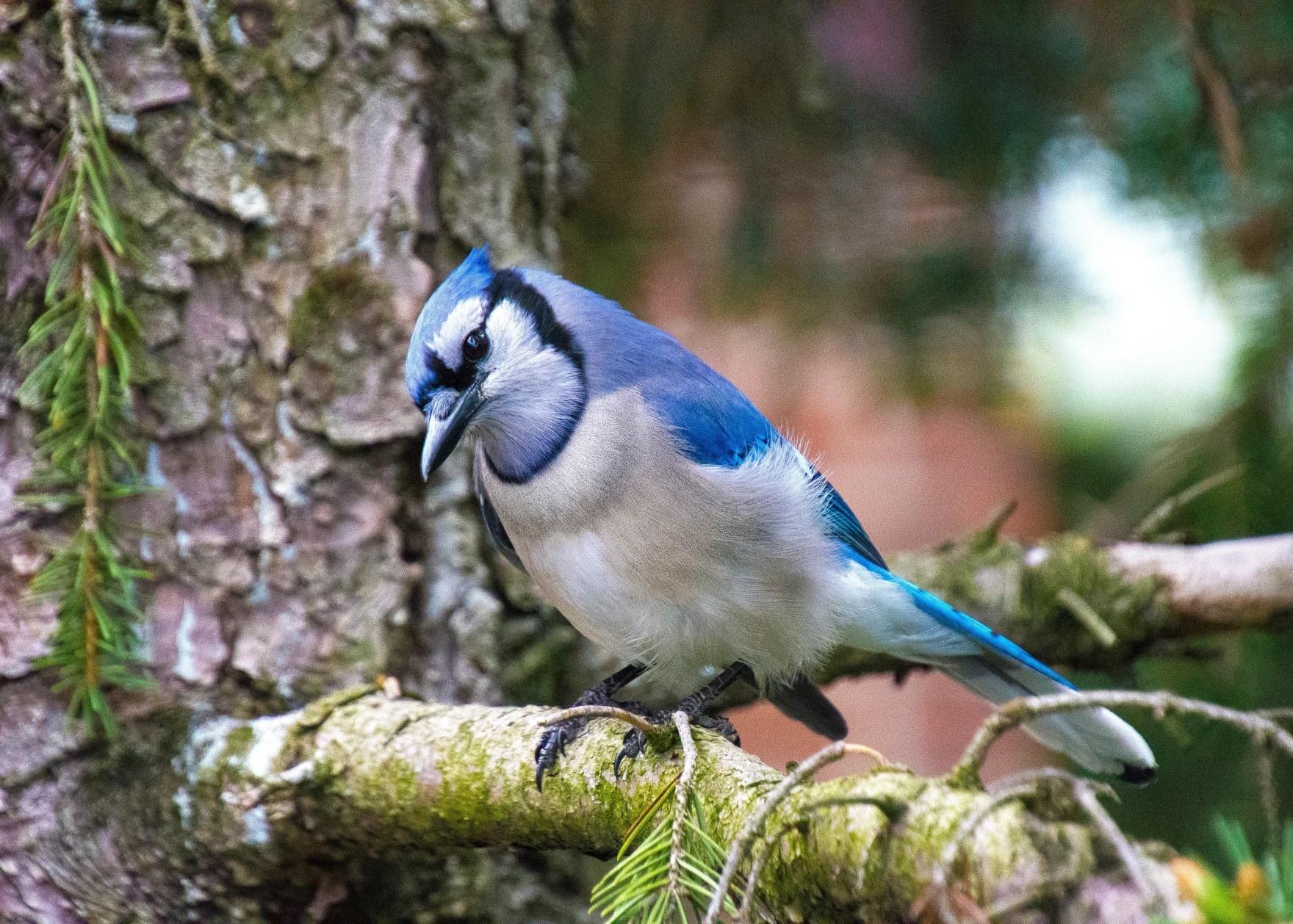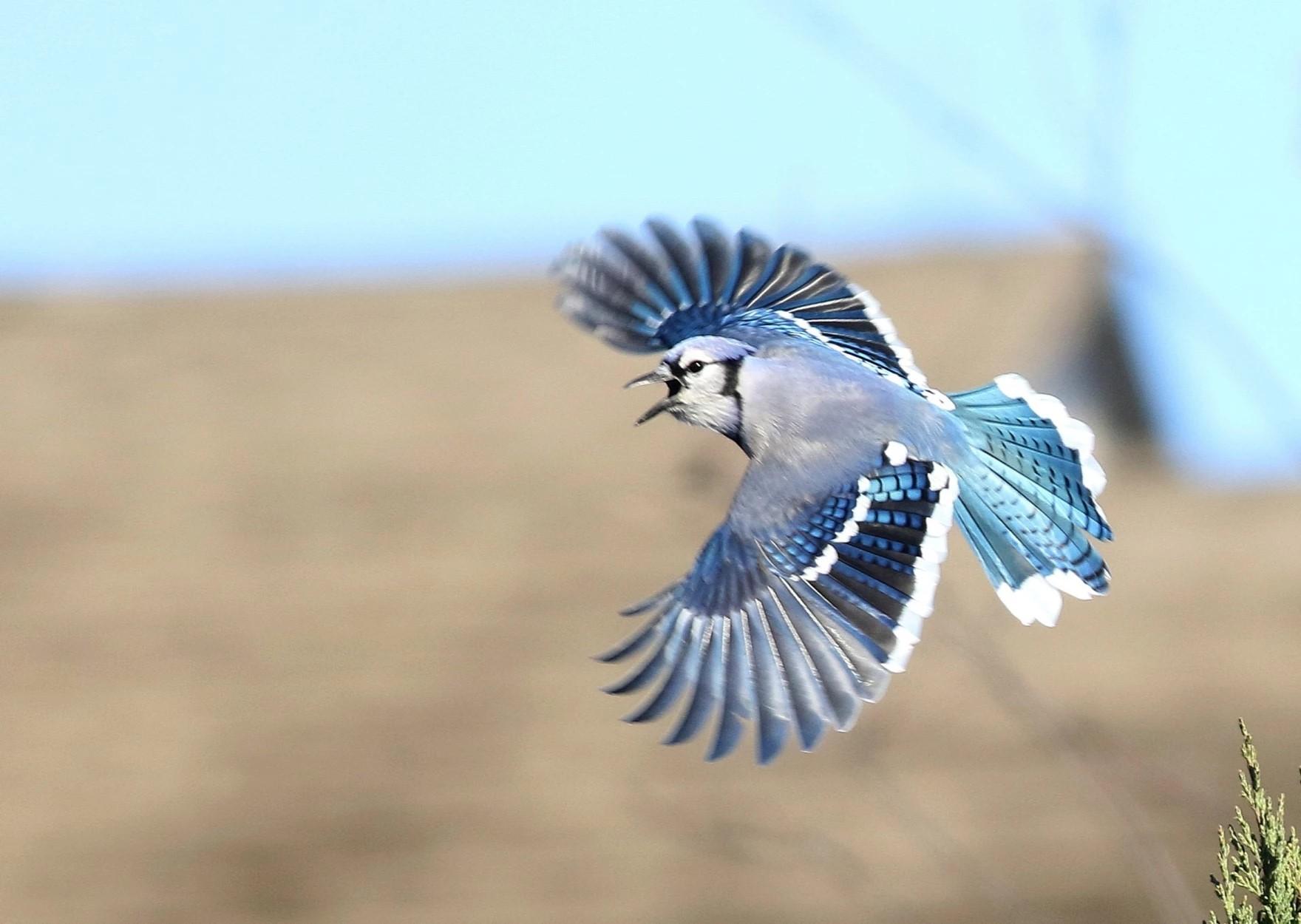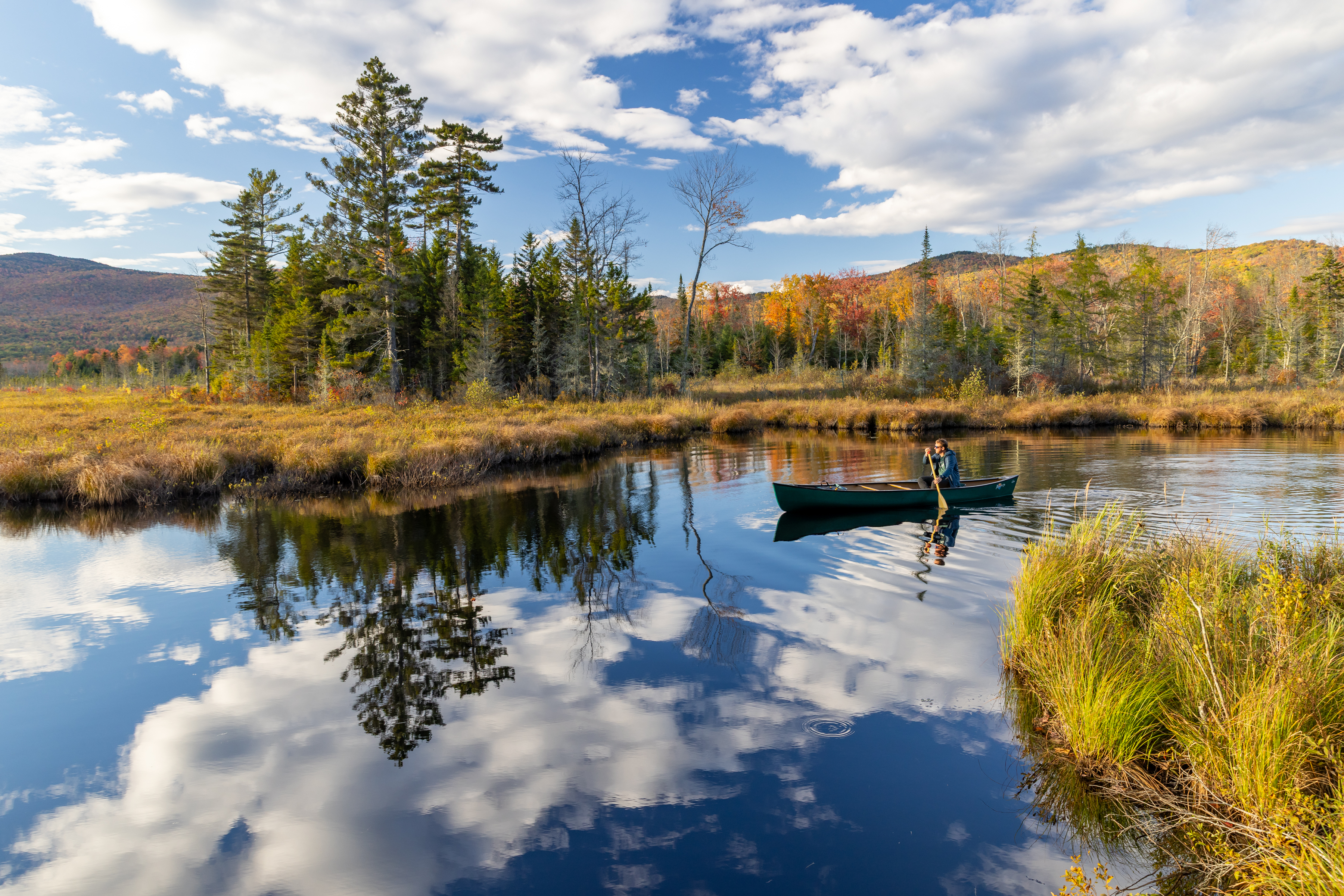- Tags:
- Something Wild,
- Wildlife

Courtesy Photo: Anita Fernandez
Blue jays are one of the first birds we learn to identify as kids. You can find them all over the country, but not a single state has chosen the blue jay as its state bird.
This may be because blue jays are sometimes characterized as bullies for their behavior at bird feeders.
“In the morning when the sun first comes up, there are chickadees, nuthatches, and there are some juncos and some tufted titmice,” says Something Wild cohost Dave Anderson of the Forest Society, describing what he sees at his birdfeeders. ”After 15 minutes or so, the blue jays all come in en masse like a band of ruffians. All the other birds scatter.”
Kim Varney Chandler of Hancock, New Hampshire, reports an unusual behavior by the blue jays in her yard.
“I hear this banging on the wall of my house and I think, ‘What in the world is that?’ she says. “So I look out the window, and I see these blue jays flying away. I went out and looked, and they've been eating the paint off of the bottom wood of our house. Huge chunks of paint. Not the wood, but just the paint.”

Surprised to hear that blue jays would be picking paint off a house, the Something Wild team decided to learn more about what blue jays are up to in New Hampshire in the winter.
Something Wild cohost Chris Martin of NH Audubon wondered if they would have a “paint chipping party” where a number of blue jays would be doing this at the same time, and was surprised by the answer.
“Yes,” says Varney Chandler. “I set my trail cam up to see if I could catch them. And there's about 12 to 15 jays that come daily. We don't usually have them in the yard. So apparently they found the paint, and they seem to think it's tasty.”
Kim discovered she's not the only one with this problem. She found an article describing a mostly northeastern U.S. phenomenon on Cornell University's Project Feederwatch.
“The theory was that the blue jays were missing calcium from their diet in the wintertime, and that they were eating paint off people's houses to get the calcium out of the paint,” she says.
Martin notes the researchers don't think the jays are digesting the paint but gathering it in their crops. “A crop is a muscular pouch in a bird's neck that temporarily stores food. They fly off and then stash it for later for the calcium they'll need for egg laying in the spring.”
Project Feederwatch says that limestone, a source of calcium, is a key ingredient in paint. Calcium carbonate, also known as calcite or chalk, has been used in paint for thousands of years.
“Calcium is a limiting nutrient in New England's soil thanks to acid rain that's leached out a lot of the calcium,” says Anderson. “So for forest growth and plants, it's something that's scarce.”
If the birds need the calcium for egg laying, does that mean it’s only the females chipping paint?
Martin says female and male blue jays look pretty much identical so it would be hard to tell just by watching them.
“Blue jays spend a lot of time gathering material, taking it off and stashing it,” he says. “It's part of being a blue jay. As a scatter hoarder, you're not thinking, ‘Hmm, I'm saving this for a time in the spring when I'm going to need it.’ It's just what you do. You stash stuff.”
Over generations, blue jays have somehow figured out that paint chips are advantageous.
“Blue jays are corvids, a highly intelligent family of birds that includes crows and ravens,” says Martin.
But Varney Chandler found a way to outwit them.
“The recommendation was to feed them eggshells,” she said, “to see if they might take you up on that offer instead of continuing to eat the paint.” Eggshells are also a source of calcium.
“Or do both. Eat your eggshells and eat your paint,” said Martin.
Varney Chandler admitted that's what she observed recently. “They've now moved on to a different part of the house.”
Varney Chandler requested egg shells from neighbors and coworkers. She rinses off the eggshells and bakes them in a 275 degree oven for about 20 minutes to sterilize the eggs. “Then I put them in a plastic bag, and use a potato masher and mash them up into smaller pieces.”
If this strikes you as a tremendous amount of effort just to deter blue jays from pecking at your house, Varney Chandler agrees, but she says she will continue to provide eggshells for the blue jays to keep from having to repaint her house.
And she will continue to observe the blue jays and scatter crushed egg shells in April or May when the birds are about to lay eggs, to see how long this phenomenon lasts.
“Once I heard this story, I realized blue jays were chipping paint on my shed, too!” says Anderson.
It's important to connect with nature and remember to take a close look at the birds in your neighborhood. “Even if you're a longtime observer like me,” says Anderson, “you can always learn something new.”
To listen to this story, visit NHPR's website.
Something Wild is a partnership of the Forest Society, NH Audubon and NHPR.
